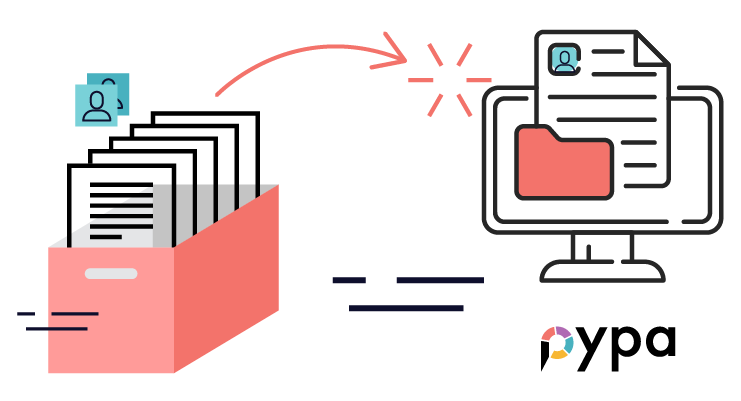
The key to successful remote employment is sustaining remote employee engagement. This is becoming more important than ever now that remote work, in some form or another, looks like it’s here to stay. As a manager, you need to know how to sustain remote employee engagement, so here’s 10 ways, from using employee management software like Pypa HR to encouraging online socializing, to sustain remote employee engagement and develop a thriving culture of remote work at your company.
Remote work is not just a response to Covid (though it’s an important option in a pandemic environment), research suggests it’s here to stay:
We can see from these statistics that remote work isn’t something you can ignore—it’s a sought-after perk, which not offering could hurt your employer brand. (Remote working is even better for the environment since there are fewer emissions from commuting and paperwork).
Small businesses especially should be considering remote work options as they are the ones who stand to really save from not having physical offices.
Of course, remote work doesn’t necessarily mean working from home full-time. Many employees like hybrid work as it allows them to stay in contact with the office. Remote work can also include working in a co-working space.
Here we will look at 10 of the best ways to sustain remote employee engagement (especially the use of human resources software), that will have your remote work setup running smoothly:
It’s easy for employees to overwork themselves in a remote work environment where there is no direct supervision. Employees may be unsure about what they should be doing or worried about productivity. This means that managers need to be extra vigilant when supervising remote workers; checking in with them regularly is crucial.
Another solution to the tendency of remote workers to overwork is using HR software like Pypa HR to help set goals so that employees know what they need to accomplish.
Flexibility is very important for employee engagement and one of the ways you give employees flexibility is by offering different working options.
Offering hybrid work might be the solution to some problems with remote work, but, depending on where you are, this may not be possible. (An alternative working option is paying for employees to use coworking spaces so that they can get more work done away from home).
Either way, you can offer flexibility around the working day so that employees can be flexible about their other commitments (such as taking their children to school).
Communication is the best solution to a lack of engagement for remote employees. Employees who know what is going on in the company are engaged employees.
Regular meetings are a great way of keeping employees in the loop. They prevent isolation as well as the blinkered focus on a single project that is common among remote employees. Using video in virtual meetings is important so that people can pick up the normal social cues that they could in a face-to-face meeting. However, keep meetings short to avoid “Zoom burnout”.
It’s also useful to have chats or channels for different projects (which can be done on HR software like Pypa HR) so that employees can talk more casually about projects that they are working on.
Of course, another essential element of workplace communication is…
For a remote workplace to be a healthy workplace, you need to recreate some of the social conditions of a physical office. This can simply be done by having employee chat rooms (like Pypa HR’s community section) where employees can talk to each other. However, you can go more ambitious by utilizing a virtual water cooler or hosting virtual office events (such as watching Netflix together).
Remote work is still very new and it’s likely you’ll make mistakes with your remote employee engagement. The best way to deal with this is to ask for employee feedback. Your employees can let you know if they like the communication platform you’re using, what fun remote activities they want, and if the tech you’re using works for them (though we’re sure they’ll love Pypa HR).
Listen to these suggestions, and you can greatly improve employee engagement. (This highlights the importance of implementing two way communication in the workplace).
As discussed in our article on employee stress, recognizing employees’ hard work is very important and vital for employee retention. Remember recognition isn’t just about pay rises and bonuses. It can be as much as a simple thank you or a message on Pypa HR’s community forum, or something more fancy like an email to the entire company or a virtual office dinner for a well-performing team.
Canning your yearly performance review because of the pandemic is a mistake. Performance reviews are a way that you can make your remote employees feel valued. They are a great opportunity to remind employees why they’re such great employees (without necessarily offering monetary reward) and reassure them of any doubts they have about remote work.
If you use HR management software (which we think you should), you should have a section where you can split employees up into self-managed teams. This is perfect for remote work, as it allows employees to get on with their work with minimal oversight from you (though as mentioned above, regular meetings are still essential). Employees will feel like they are supported and not micromanaged, cultivating a bond of trust between them and you.
Technology is your friend when it comes to remote work. Pypa HR or another HR software is perfect for your remote employees because it has platforms for community discussion, time tracking and teams, along with plenty of other useful features. Other items you may need to think about for remote workers include:
Remote work can interfere with employees’ work-life balance. It’s a good idea to encourage employees to pursue hobbies and interests unrelated to work (especially sports and exercise which are great at helping with employee stress).
More related to work is getting employees to start new projects or encouraging them to work on side-projects. Not only does this encourage employee engagement (because new is interesting), but it also can have a significant ROI as side-projects are sometimes very successful.
There are many excellent ways to sustain remote employee engagement. “Remote employee engagement”—once barely a concept—has become an important consideration in the last year. Implementing methods like remote employee socializing and autonomous teams are a must. Of course, the ideal way to sustain remote employee engagement is through HR software—so, Pypa HR, a cloud-based HR software solution is the perfect tool for your business. Register your interest for Pypa HR today!

A good recruitment process is key to hiring top talent. It may seem quite complicated to create a...

Employer branding can help improve your hiring, your employee retention and your sales. Therefore,...

Employee records are something that all businesses, whether big or small, need to keep, sometimes...